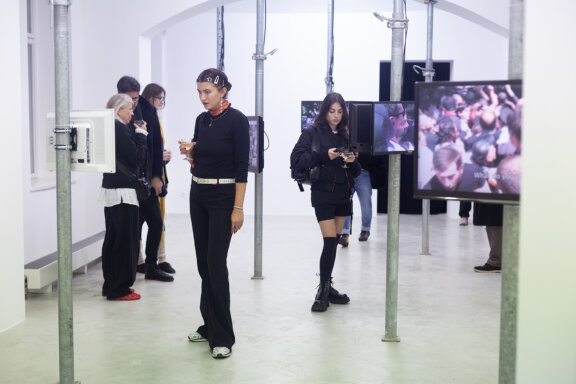
Opening Make Voices Be Heard: Chapter Three
The third exhibition chapter of the Fotograf Festival opened at the hunt hastner gallery on October 10. You can visit it here until November 2.
Find more about the exhibition
In recent years, contemporary art has been dominated by the debate on the legacy of colonialism. This debate is however going on without substantial involvement from representatives of the countries of Central and Eastern Europe and Central Asia, despite the fact that this part of the world also has broad historical experience with colonialism and issues of racial discrimination. This is referenced by a number of artworks from these regions, which have not yet received adequate attention. The fourteenth annual Fotograf Festival, subtitled "Make Voices Be Heard", focuses primarily on the voices of artists from the areas in question with the aim of expanding the current international discussion on colonialism, postcolonialism and discrimination to include perspectives from these regions.
Noemi Smolík & Adam Vačkář
The Fotograf Festival explores intersections in photography and contemporary art – just like its partner projects – Fotograf Gallery and Fotograf Magazine. Festival is held in Autumn months and it presents current topic through solo as well as group exhibitions prepared in cooperation with invited domestic or foreign curators in various Prague galleries and institutions. A series of discussions, atist talks, site-specific events, public space exhibitions, projections and guided/commented tours accompany that exhibition program. Fotograf Festival is the only thematic- and curator-conceived photography festival in the Czech Republic. Its aim is to promote the photographic medium and its broader integration into contemporary art and into the conscience of the general public.
The main curators of Fotograf Festival's fourteenth year are Noemi Smolík and Adam Vačkář. The festival's main programme consists of several exhibition projects, a professional symposium and tie-in events that take place in October 2024.

The third exhibition chapter of the Fotograf Festival opened at the hunt hastner gallery on October 10. You can visit it here until November 2.
Find more about the exhibition
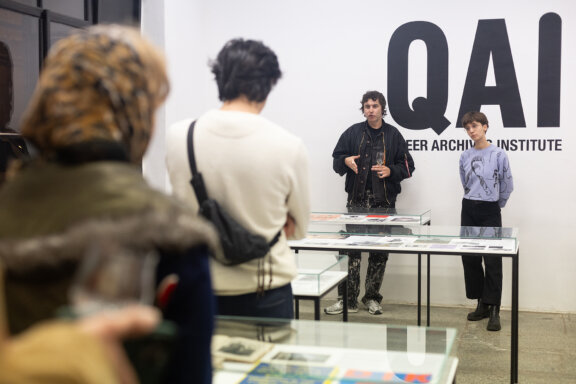
The exhibition Make Voices Be Heard: Chapter Two with the project Queer Archives Institution opened at etc. gallery on October 8. You can see it until October 20, so don't miss it!
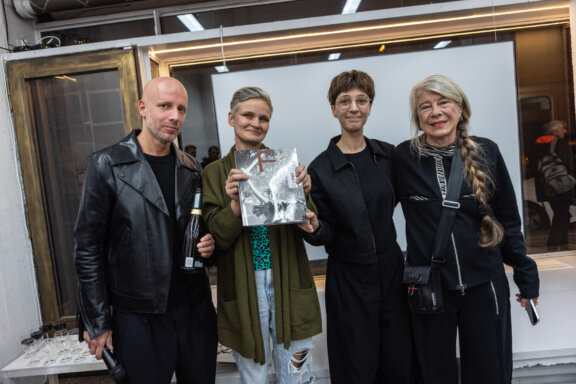
The opening of the 14th Fotograf Festival and the exhibition Make Voices Be Heard: Chapter One took place together with the launch of the new Fotograf Magazine on October 3. The exhibition is on display at Fotograf Gallery until November 7, so stop by!
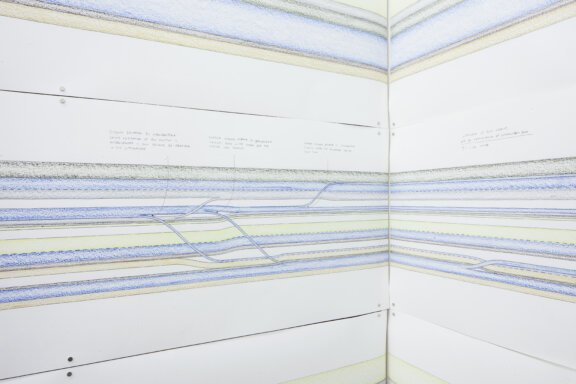
Fotograf Gallery
Curators: Noemi Smolík & Adam Vačkář
4 Oct – 8 Nov 2024
Opening: 3 Oct 2024
Exhibiting artists: Paul Chaney, Genti Korini
The first chapter of the Fotograf Festival introduces the work of two artists. UK-based artist Paul Chaney began preparing his extensive installation Donetsk Syndrome Diagrammatic in 2017 during his stay in Ukraine. It was originally intended for the Izolyatsia platform in Donetsk, but these plans could not be realised due to the war. Chaney therefore reconstructed the installation in the form of a large-scale diagram, adding more findings from his research on the 14 billion years of development of one of the territories richest in minerals. Since 1917, this region has experienced five wars. The result is a crisis in its inhabitants’ identity, which made Russian infiltration and destabilisation possible, culminating in the current war between Ukraine and the Russian Federation.
In the lower room of the gallery, the installation is complemented by Spider’s Envy, a 21-minute black-and-white film made by Albanian artist Genti Korini in 2022. The film presents a fascinating conversation between an artist and a critic about the relationship of modern art, with its preference for abstract art and individualism, and the socialist notion of the “new human” and artistic realism as an opposition to decadent bourgeois art. Amid the ruins of modern architecture develops this gripping dialogue – which has lost nothing of its currency – accompanied by iconic photographs of modernist architecture. The text is based on the writings of the Albanian art historian Alfred Uçi.
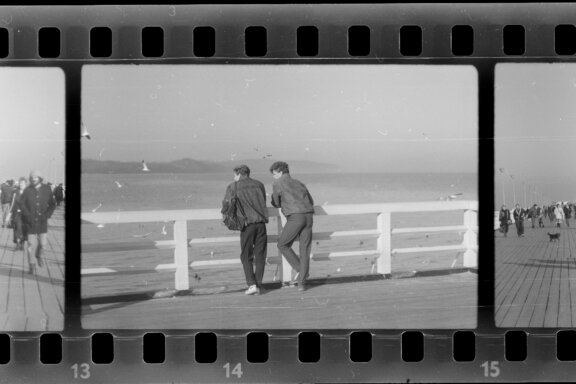
etc. galerie
Curators: Noemi Smolík & Adam Vačkář
9 Oct – 20 Oct 2024
Opening: 8 Oct 2024
Exhibiting artist: Karol Radziszewski
The second chapter of the Fotograf Festival presents the Queer Archives Institute, a non-profit art-and-research organisation focusing on data collection, digitisation, analysis, presentation, and artistic interpretation in relation to queer archives with a particular emphasis on Central and Eastern Europe. The Queer Archives Institute is a migrating project by Polish artist Karol Radziszewski, open to transnational collaborations with artists, activists, and researchers.

hunt kastner gallery
Curators: Noemi Smolík & Adam Vačkář
11 Oct – 2 Nov 2024
Opening: 10 Oct 2024
Exhibiting artists: Soso Dumbadze, Furqat Palvan-Zade
The third chapter of the Fotograf Festival introduces two artists. A Yellow Bus (2018) is a nine-channel video installation by Soso Dumbadze from Georgia that reconstructs an installation presented in the streets of Tbilisi in 2018, which used fifteen screens to document the events that took place five years earlier. On May 17th, 2013, on the International Day Against Homophobia, a fanatical crowd a thousand strong led by an Orthodox priest attacked a group of around forty peaceful protesters for LGBT rights. The protesters had to run for cover in yellow police vans, but they were still not safe. The aggression with which the crowd turned on the small group surprised both the protesters and the police. As there was a threat of the masses attacking the installation, the event had to be called off. It could only take place three weeks later, with the presence of around a hundred policemen.
In the back room of the gallery, you can see a the 23-minute film The Ball and the Polo Stick or the Book of Ecstasy (2022) by Furqat Palvan-Zade, who was born in Tashkent, Uzbekistan. Starting off from a fascination with the eponymous 15th-century Persian text, Palvan-Zade embarks on a journey across Central Asia, which leads him to the nomadic nations that invented the game of polo, now considered the symbol of British colonialism. Entwined in poetic Sufi metaphors, the film features tsarist imperial generals as well as the modern Russian oligarch who stole this manuscript. The film tells of the power games between Western European powers and Russian imperialism in this region, racist prejudices, and projections tinged by orientalism that seem outright absurd from today’s decolonised perspective.
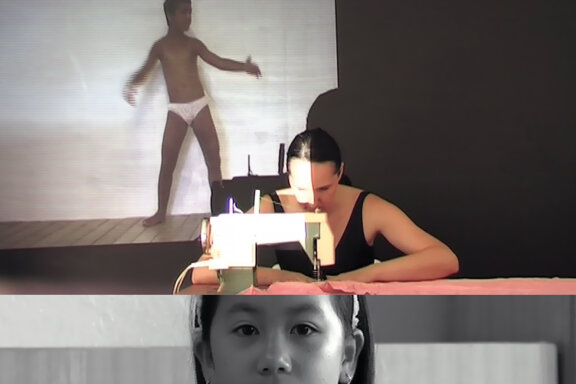
MeetFactory Gallery
Curators: Noemi Smolík & Adam Vačkář
25 Oct – 6 Jan 2025
Opening: 24 Oct 2024
Exhibiting Artists: Yevgenia Belorusets, Alina Bliumis, Ptuška & Keto Gorgadze, Miero Koizumi, Jeanna Kolesova, Diana Cam Van Nguyen, Minh Thang Pham, Marta Popivoda, Emília Rigová, Sráč Sam
The fourth and final chapter of the Fotograf Festival introduces the work of ten artists at the MeetFactory gallery. Central to the exhibition is Japanese artist Meiro Koizumi’s 2023 five-channel projection, Theater of Life. When Koizumi was invited to the 14th biennale in the South Korean city of Gwangju, he collaborated with people of Korean origin who had escaped Russia for South Korea after the beginning of the war in Ukraine to create an unusual video performance. Taking their inspiration from the traditional Korean Goryeo theatre, established in the 1930s by Koreans deported do Kazakhstan, the emigrés focused on issues of cultural identity that allowed them to confront their own situation. The result is a poetic installation filled with alienation, sadness, and desire, radiating not only energy but also dignity and determination.
Belarusian artist Alina Bliumis will present a series of photographs created in 2020 titled Center of Europe. The series documents various locations that are sometimes referred to as the centre of Europe, found in Belarus, Slovakia, and Poland. Ukrainian artist Yevgenie Belorusets’s 2021 collection of photographs Kristina’s Tagdocuments with thrilling immediacy the everyday life of Roma communities that had to leave their homes due to the war. Slovak Romani artist Emília Rigová will stage her own Oltář (Altar), composed of artefacts relating to her identity.
Identity is also the subject of contributions by two representatives of the Vietnamese community in Prague. The twelve-minute film Love, Dad (2021) by Diana Cam Van Nguyen, an internationally acclaimed film that has been awarded multiple prizes, is a humorous and dexterously animated short about the conflicts between traditional Vietnamese norms and the expectations of contemporary liberal society. Minh Thang Pham also explores issues of cultural identity. He currently lives in Vietnam where he is studying the traditional, 8000-year-old technique of lacquer painting. His experiments with this technique will be introduced at this exhibition for the first time. The fate of Vietnamese workers, especially seamstresses in the 1970s and ’80s, in connection to her own fate sewing shirts for Russian soldiers in Czechoslovakia after 1968, is the subject of Šičky (The Seamstresses, 2008) by Sráč Sam, located at the end of the wooden tunnel.
Memory, the manipulation of historical memory, and the creation of false heroic myths are the subjects of Memory is an Animal Which Barks With Various Mouths, a 2023 video by Jeanna Kolesová, a Russian artist who proficiently uses the most up-to-date possibilities of electronic equipment. In another two-channel installation, "SURFACES THAT MATTER: Youth Day 1988" (2022), Marta Popivoda, an artist from Serbia, collaborated with theorist Ana Vujanović to explore the social choreography of the last days of socialist Yugoslavia and the relationship between the individual and the collective body. This exploration is based on the archive of the Youth Day mass performance organized in Yugoslavia in 1988. This screening can also be understood as a reference to the gripping performances at today's pop concerts. The Belarusian artist working under the moniker Ptuška and Georgian artist Keto Gorgadze introduce their Thyroxia (2023), a chilling document of the irresponsible response to the threats present after the Chernobyl nuclear explosion in 1986, which was also motivated by Russia’s thoughtless colonial approach to neighbouring countries.
Olja Triaška Stefanović artistic project “Yutopislavia” is an exploration of Yugoslavia and its relation to the non-aligned movement using a wide range of found and archival sources, juxtaposed with contemporary images. It looks at the legacy of non-aligned movement today and what it might reveal to us in our current moment. It is a visual dialogue across different time periods, moments and spaces incorporating archival images, documents, text and photographs from New York, San Francisco, Belgrade, Brijuni and other places in former Yugoslavia. Triaška Stefanović is asking which aspects of Yugoslavia's history have been forgotten or overlooked, and how individuals of her generation still identify with the legacy of the Non-Aligned Movement.